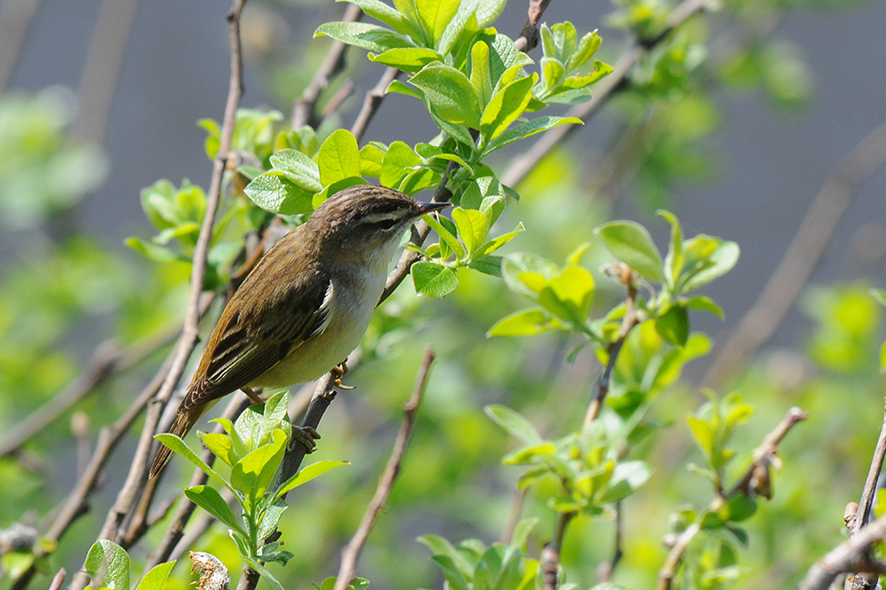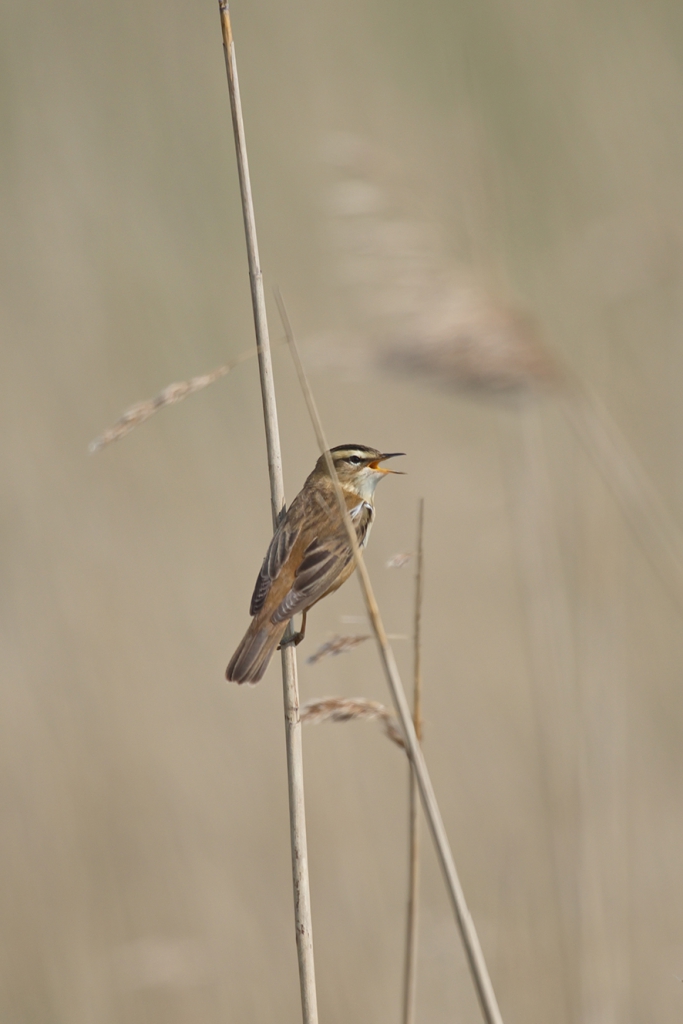Sedge warbler
- Flies 4,800 km on one ”tank”
The sedge warbler is a very small bird with a body weight of only about 10 grams. However, it is able to fly non-stop from the breeding areas in Denmark to its wintering place in West Africa. Therefore, it has to tank up its fat reserves before the long trip. This makes the little bird into a real glutton, which can devour up to 40 aphids per minute. This can increase the weight by one gram of fat per day until its body weight is increased by 50%. In comparison, a man of 70 kg would put on 7 kg in a day, and increase its weight by 35 kg in 5 days.

Droughts in Africa threaten the sedge warbler
The sedge warbler was a very common Danish breeding bird until the 1970s. It breeds in all kinds of wetlands, ideally in the border area between marsh beds and scrub. Although this habitat has become more widespread in Denmark in recent years, the sedge warbler has continued to decline. The reason is probably due to the fact that the wintering areas in Africa have been repeatedly hit by drought.
Facts
The sedge warbler is 13 cm long and has a wingspan of 17-21 cm. Like many reed bed birds, the sedge warbler can be quite difficult to spot. It can most easily be detected when it sings from a song post, from which it takes a short fluttering song flight in mid-song. It can be recognised by the dark crown at the sides, the light eyebrow stripe and dark eye stripe that gives it a slightly angry appearance. It lives in damp reed beds and scrub, and is scarce as a Danish breeding bird.


